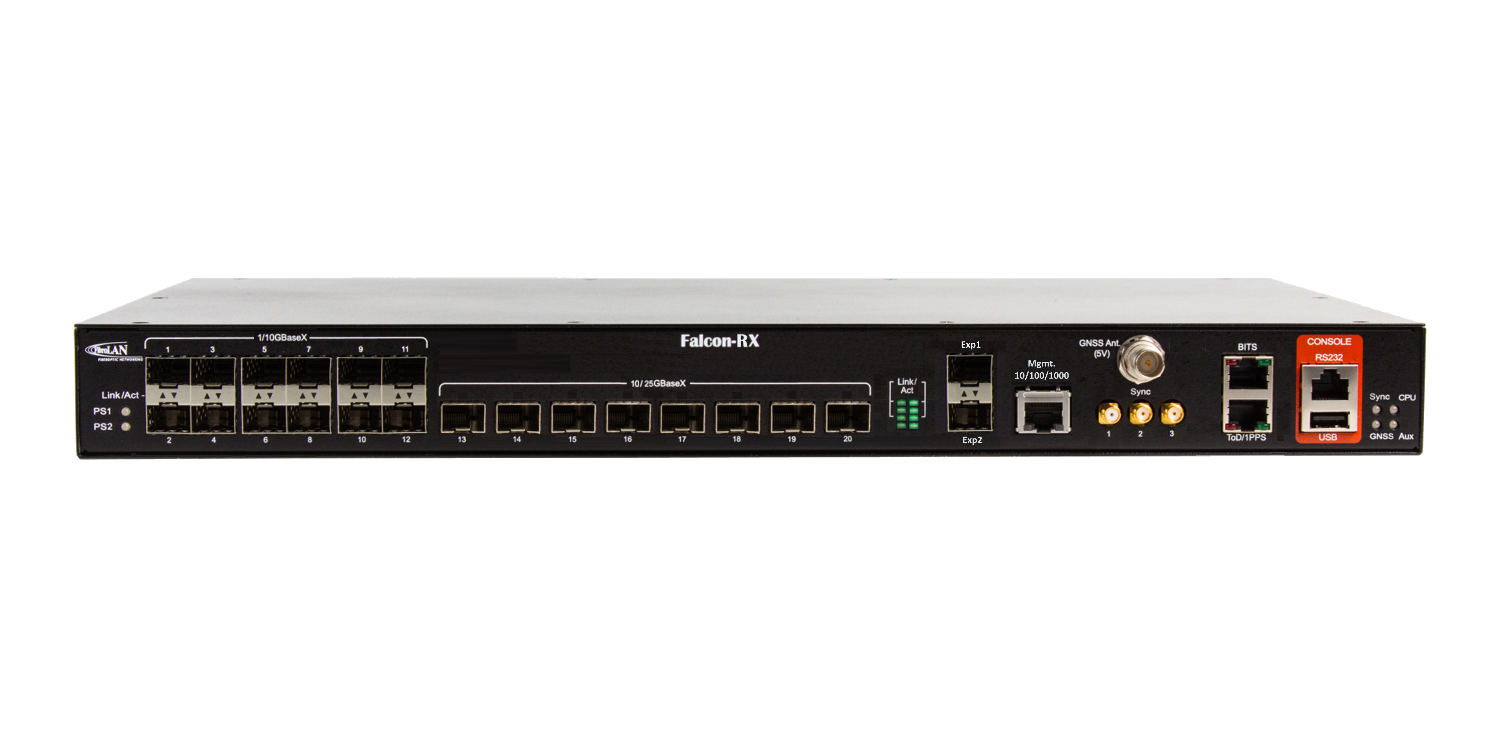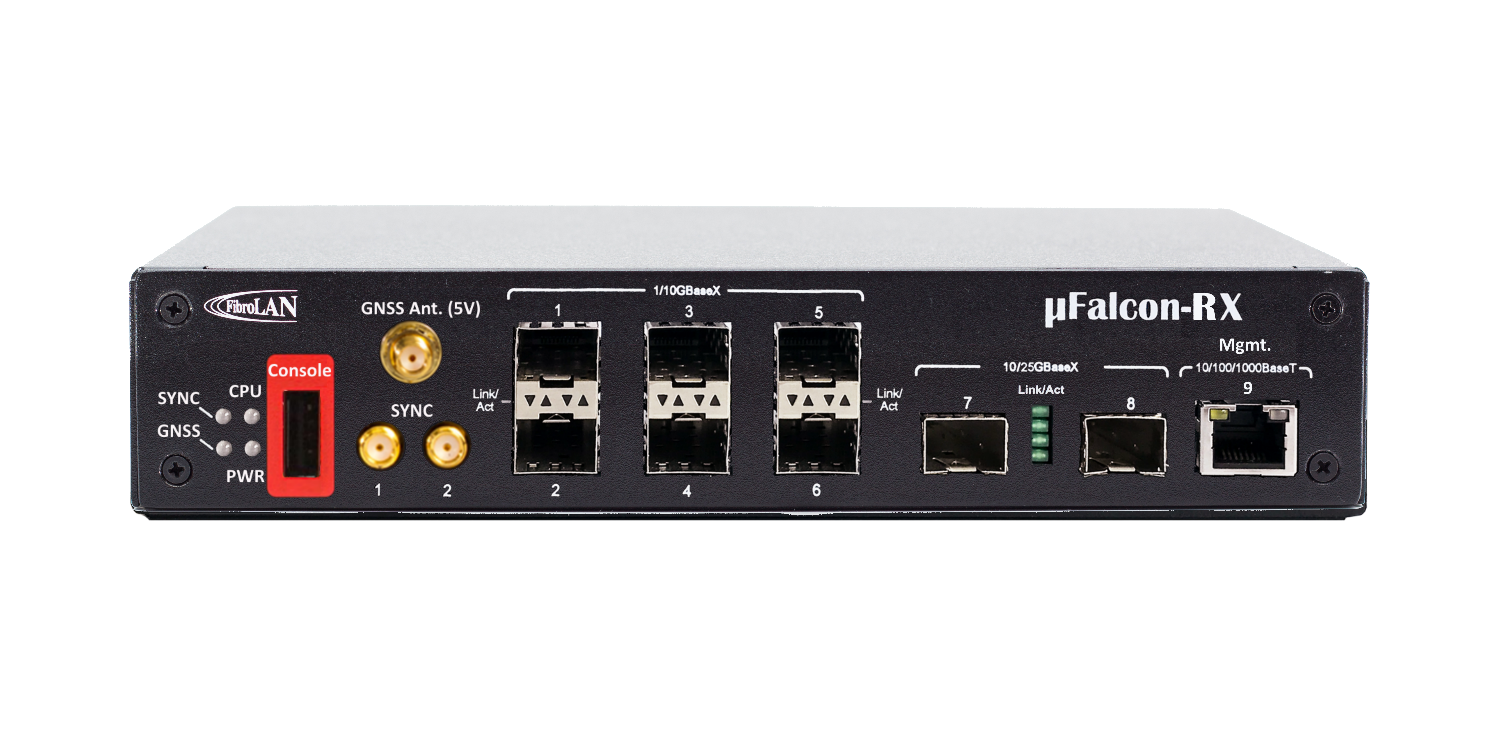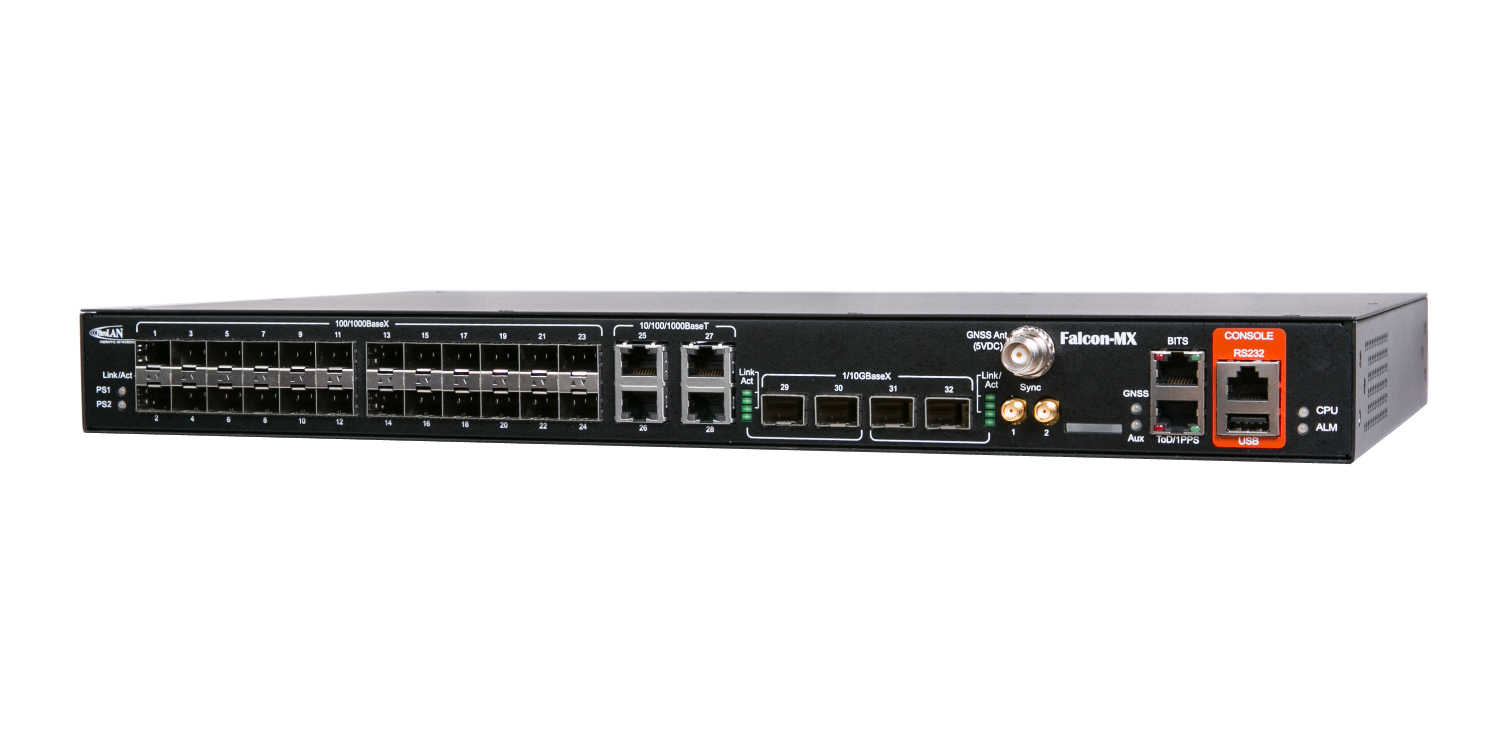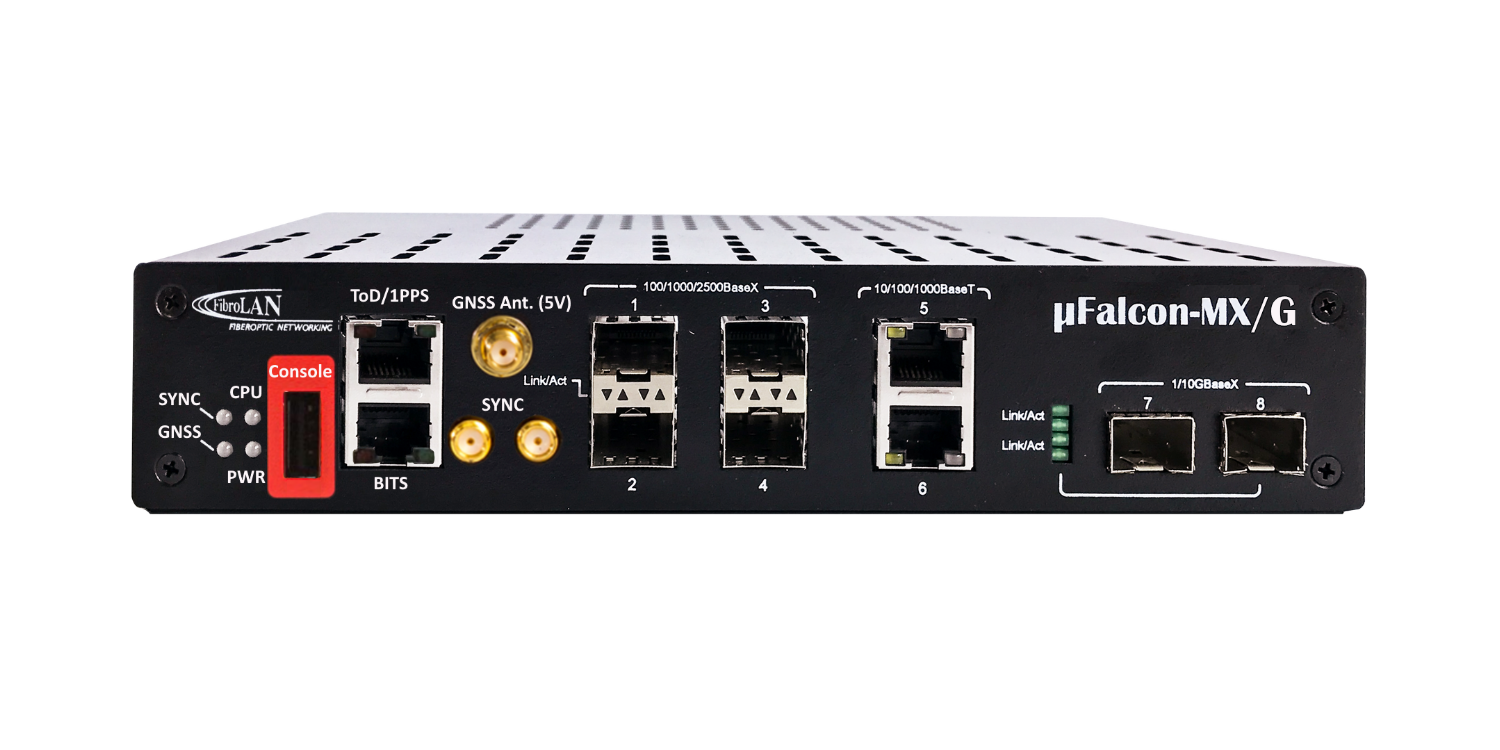5G O-RAN xHaul PTP Switch
Fibrolan's Falcon R Class and Falcon M Class switches combine top of the line PRTC Grandmaster capabilities with an ultra accurate Boundary Clock and Transparent Clock switches, making them the ideal 5G fronthaul transport solution.
To learn more about Fibrolan’s PTP Switches offering follow the links below:
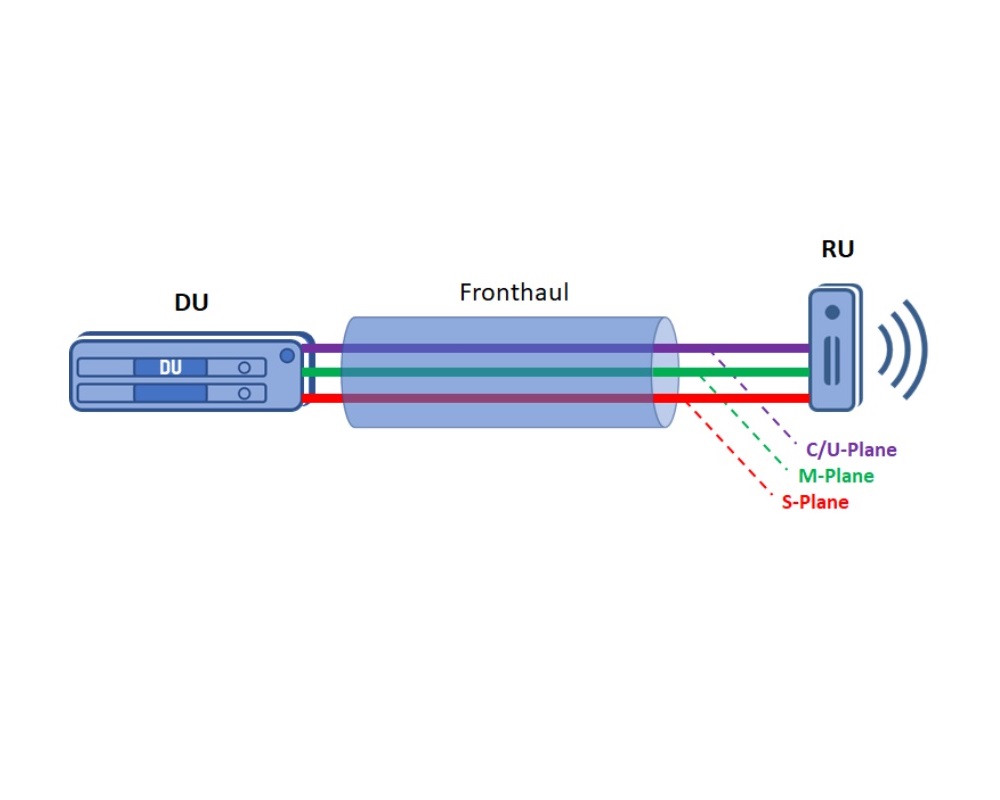
5G Fronthaul Traffic Planes
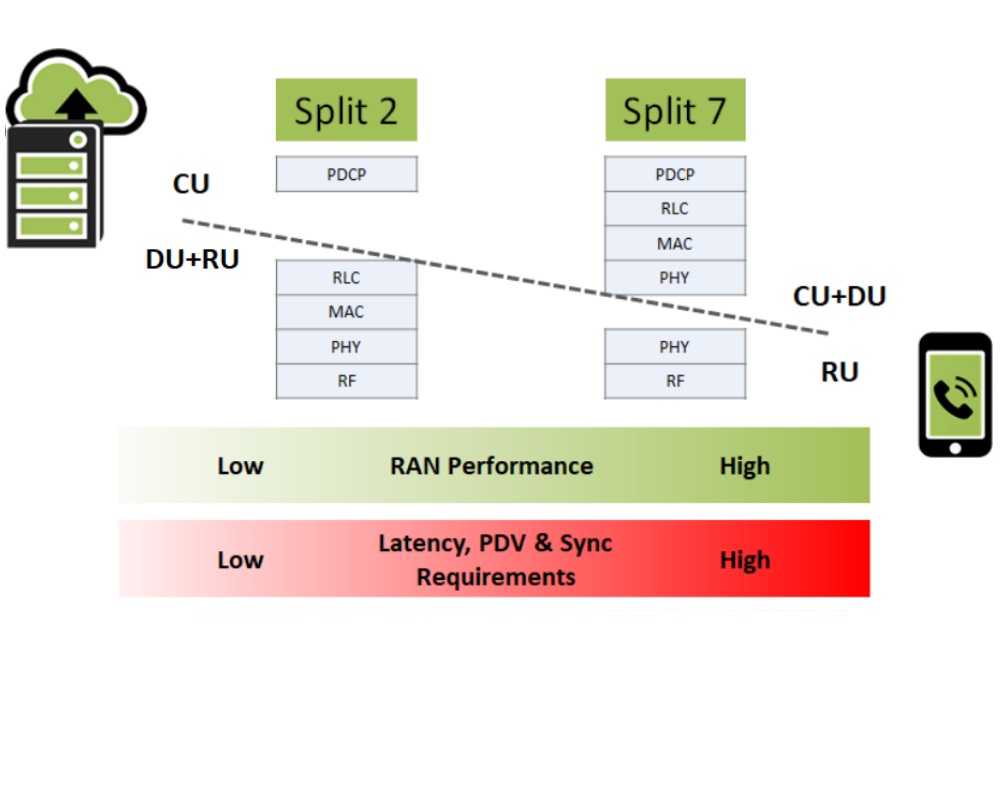
3GPP 5G Layer Splits
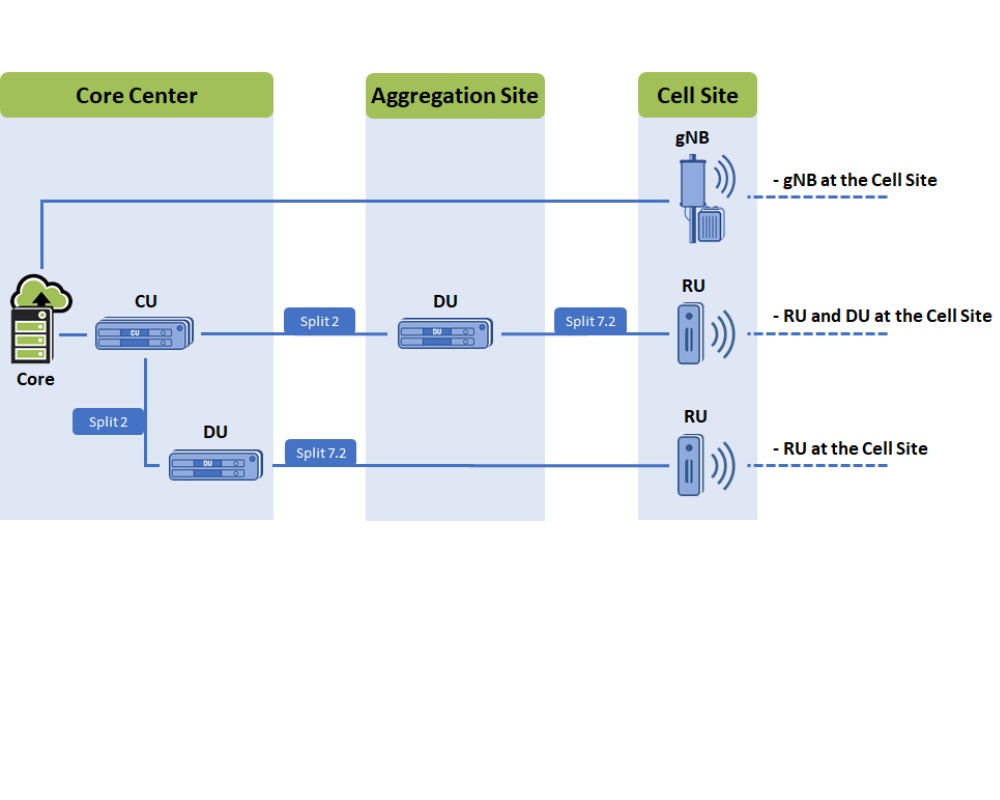
3GPP 5G Layer Split Topologies
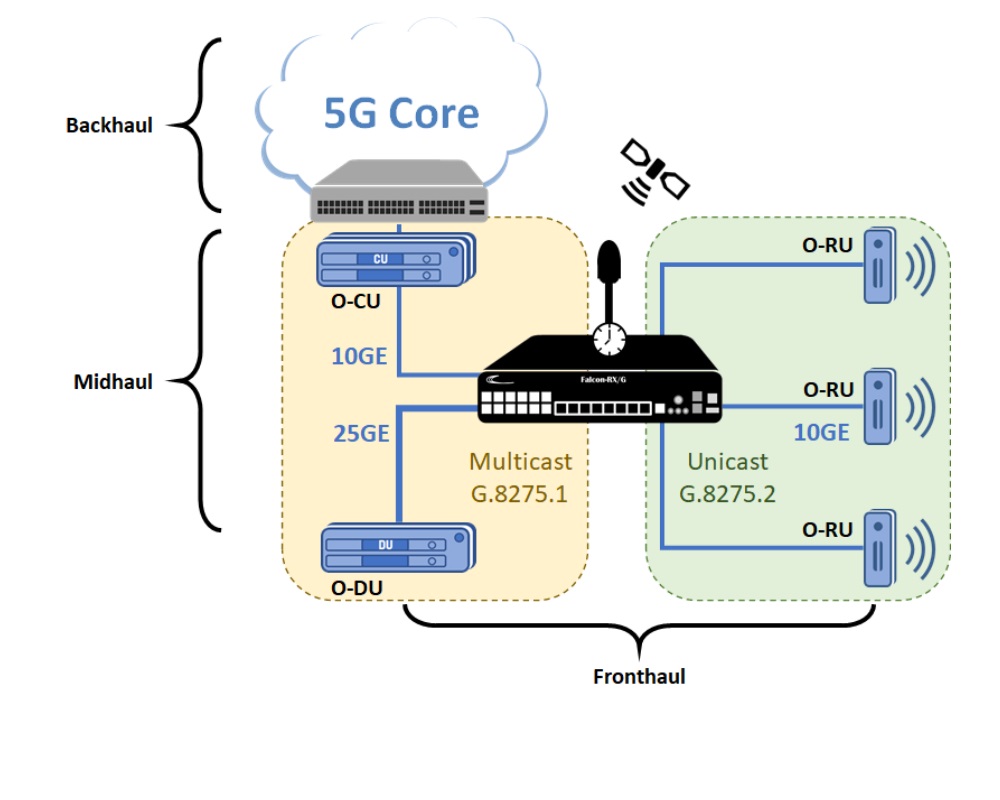
PTP Profile Adaptation
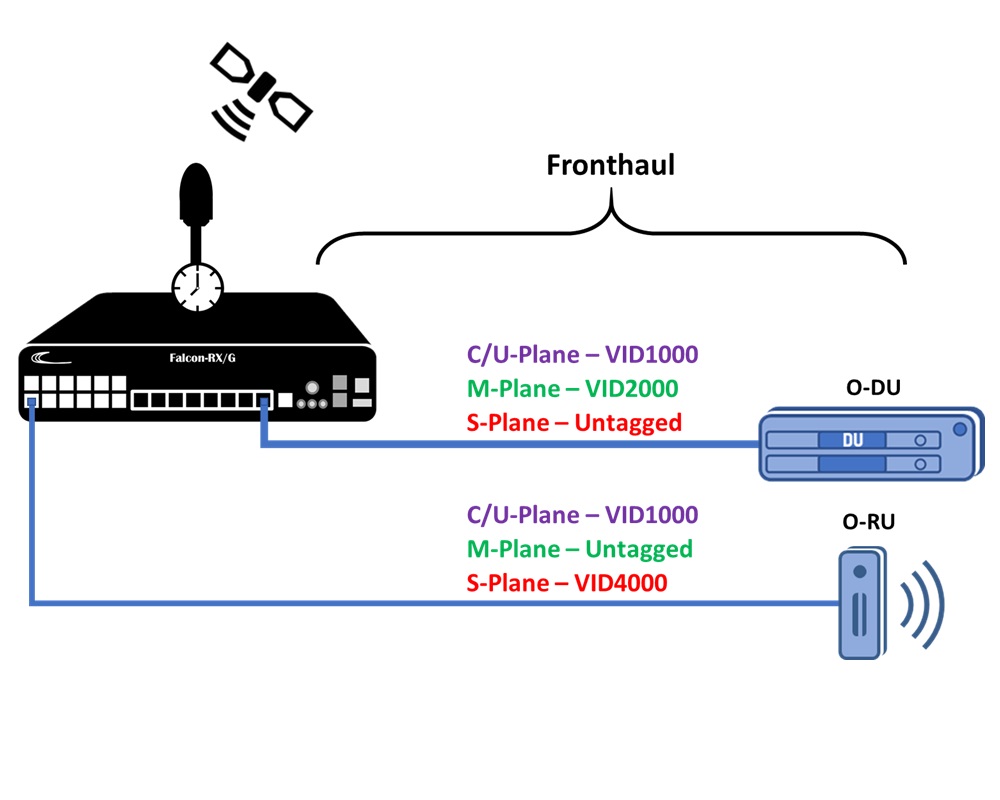
VLAN Tag Manipulation
The importance of Timing in 5G Fronthaul
Current data networks are going through a significant transition leaving their asynchronous nature behind, while gradually becoming Timing reliant. Services and applications that require their operations to be logged on millisecond levels have been common practice for years in financial applications, while Mobile radio networks have the synchronization requirement at the single microsecond range since 3G technologies were introduced. With emerging 5G Mobile networks the level of synchronization between network elements had soared to much stricter levels in the hundreds and even tens of nanoseconds scale. To sustain this tight synchronization constraints, network elements had to adopt new protocols and algorithms coupled with enhanced hardware.
Previously, legacy synchronous networks relied on network elements to transmit and receive data at the same frequency in order to establish communication links. Modern data networks have more challenging Timing requirements in addition to Frequency, which include Phase and Time of Day (ToD). Not only the same number of repeated events per second (Frequency) must be maintained, but also the exact point within a single frequency cycle, meaning the time difference between two events (Phase) and actual date and time the event occurs (ToD) are required.

Obtaining such accurate Timing levels over a packet-based network can prove to be a formidable challenge taking into account its asynchronous nature. It is widely known that every network element (e.g. switches and routers) introduces different latency in forwarding data. In addition, packets have different length and therefore requires different time for transmission. Moreover, traffic load is not a static factor, a fact which brings the queuing and scheduling variable into this complex equation. All these elements result in significant and unpredictable delay and asymmetry variations of the timing signal transported over the network. To overcome these conditions, dedicated protocols and methods were developed for carrying Timing over packet networks. Most prominently used protocols are IEEE1588 Precision Time Protocol (PTP) and Synchronous Ethernet (SyncE).
IEEE1588 Precision Time Protocol (PTP)
PTP is a packet-based protocol designed to carry Timing signal over data networks. It performs optimally when adopted throughout the entire network but can be adjusted to provide reasonable performance over hybrid networks comprised of PTP aware and unaware network elements. In fronthaul deployments however, it is absolutely vital that not only all elements will support PTP, but also execute the protocol at the highest level of performance, as the accuracy levels required are 260nsec and even greater. PTP is also unique in the sense that it can deliver all three components of the Timing signal: Frequency, Phase and ToD.
Synchronous Ethernet (SyncE)
Unlike PTP, SyncE uses the Ethernet physical layer to propagate and recover the Timing frequency, very much like SONET/SDH networks used to do, or even better. It relies on Ethernet frames only to advertise the signal’s quality, so the network element recovering the signal could determine if it is reliable (this is known as ESMC). SyncE can only propagate one component of the Timing signal: Frequency.
5G Transport Architectures
Timing is only one of the data flows that needs to be transported across the 5G fronthaul network due to the evolution of the base station architecture. One of the major advantages this evolution introduces is the gNodeB disaggregation approach, which splits it into three components:
- Central Unit (CU)
- Distributed Unit (DU)
- Radio Unit (RU)
This split architecture of the eNodeB/gNodeB aims it breaking the traditional vendor lock-in state, common in traditional mobile networks. It provides many benefits regarding deployment flexibility, cost, availability, resiliency and enables RAN virtualization. The gNodeB disaggregation allows deploying different architectures, each with its own capabilities, according to the implemented functional split (as detailed in 3GPP TR 38.801):
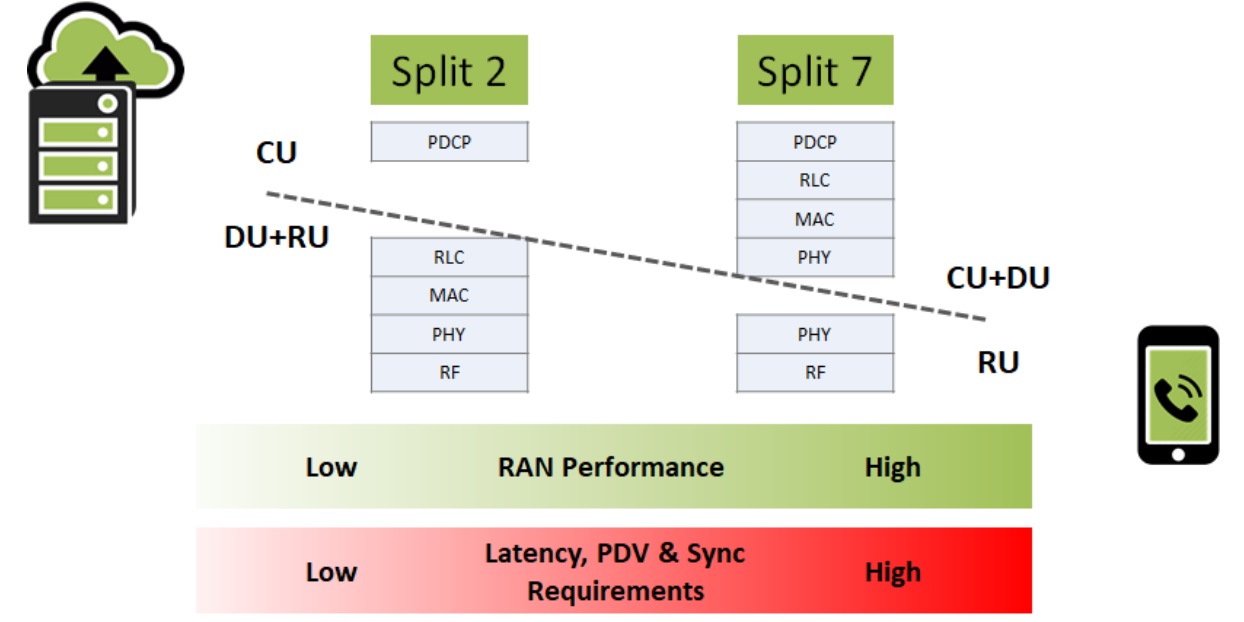
Depending on the selected functional split, several architectures may be implemented in the deployment of a 5G cell site:
- gNB at the Cell Site: integrated CU+DU+RU
- RU and DU at the Cell Site: Co-located DU and RU
- RU at Cell Site: Co-located CU and DU at the Core Center
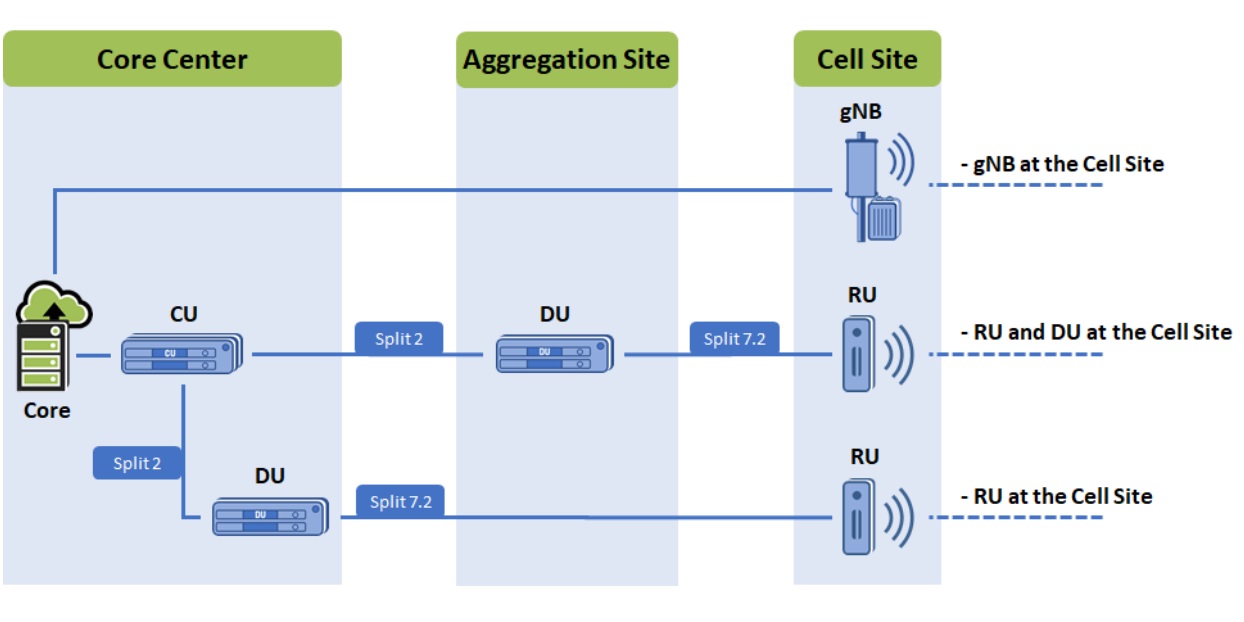
The adopted architecture may depend on the required 5G services being deployed or installation conditions. Nevertheless, in all cases the disaggregated gNodeB elements must maintain interaction on four major functional levels:
- User data (U-Plane)
- Control (C-Plane)
- Management (M-Plane)
- Synchronization (S-Plane)
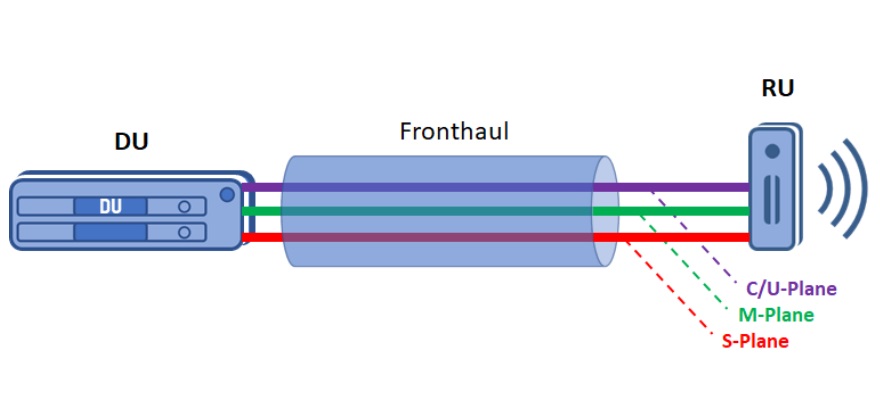
The O-RAN Alliance focuses entirely on split 7.2, using Ethernet based eCPRI interfaces and most commonly 25GE and 10GE physical interfaces. The section below details the various Synchronization Configurations defined by the O-RAN Alliance specifications for 5G fronthaul network.
O-RAN Synchronization Configurations
While fronthaul latency restrictions between DU and RU may be in the range of 100 microseconds, the synchronization time error restriction is much tougher and may even go below 100 nanoseconds, depending on the functional split point and the type of the 5G services deployed. To support this level of synchronization the O-RAN alliance describes four configurations for fronthaul synchronization (as detailed in O-RAN.WG4.CUS):
LLS-C1 Configuration
In this configuration the DU performs as a PTP Boundary Clock (BC) sourcing the Timing signal from the GM and then directly connected to the RU to synchronize it.
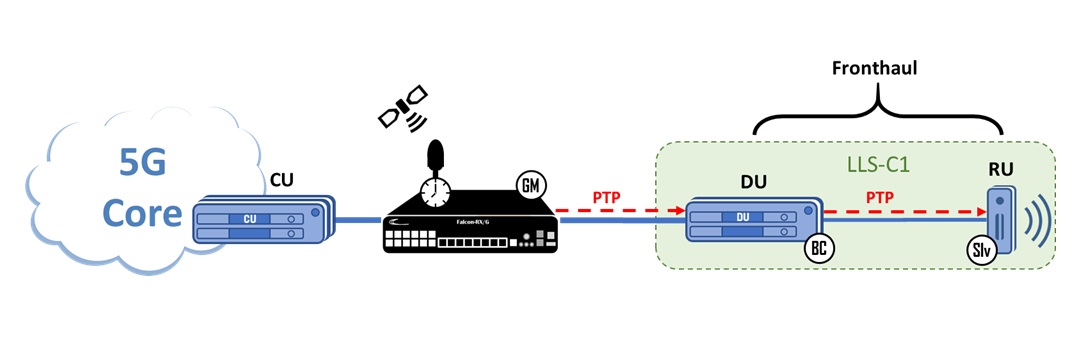
LLS-C2 Configuration
Like LLS-C1 topology, in this configuration the DU performs as a PTP BC for distributing the network Timing towards the RU. One or more PTP switches are allowed to be installed in between. These fronthaul PTP switches may function as Telecom Boundary Clocks as specified by ITU-T G.8273.2. Transparent Clock (TC) switches are also allowed as BC replacement as long as they comply with G.8271.1. The allowed number of switches is limited by total frequency and time error contributions introdued by all switches in the chain as specified in Annex H of the O-RAN.WG4.CUS. This topology requires the support of PTP on all elements on path.

LLS-C3 Configuration
Network timing distribution from a PTP Grandmaster located within the fronthaul network, between DU sites and RUs remote sites. One or more PTP switches are allowed in the fronthaul network. This widely adopted topology benefits the most from introducing an integrated PTP Grandmaster and PTP Switch, which provides the ideal solution for fronthaul timing and transport. Additional PTP switches are allowed in the fronthaul network, which may function as PTP BC or PTP TC subjected to Annex H mentioned above. Although Partial Timing Support may also be allowed (using Timing unaware switches as per G.8275.2 Telecom Profile), to avoid marginal performance it is highly recommended all switches will support PTP.
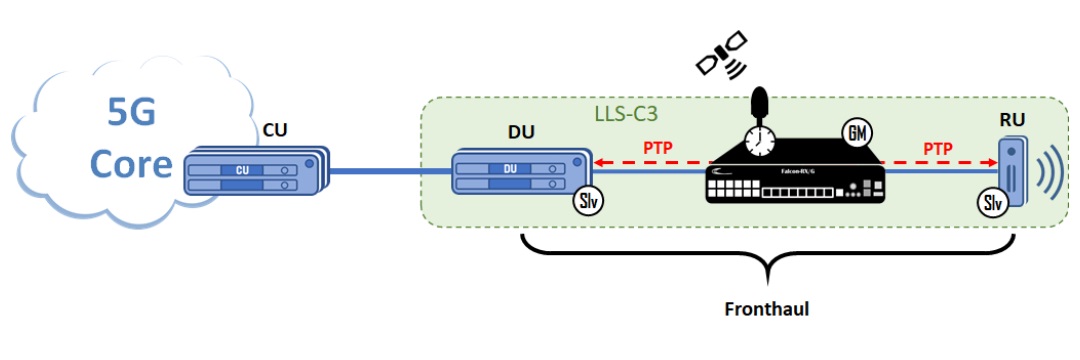
LLS-C4 Configuration
In cases where the fronthaul transport network is partially or in full is not upgradable to meeting the target performance at the RU as specified G.8271.1, a local Timing source option (typically GNSS) is allowed.

While currently not mandatory (as per O-RAN O-RAN.WG4.CUS-v05.00), support of SyncE (Synchronous Ethernet) throughout the entire Fronthaul network will significantly improve timing accuracy, reduce frequency and time error, dramatically increase stability and provide additional resilience during holdover. This improvement applies to all four configurations detailed above.
PTP Switch with Grandmaster capabilities
It is important to acknowledge that typical Fronthaul deployments require that the DU services more than a single RU, therefore, PTP switches are a vital component of the 5G Fronthaul. A PTP Switch must provide a suitable transport solution for the different O-RAN Fronthaul topologies, in particular LLS-C2 and LLS-C3 where it is required to forward user traffic along with management and synchronization. As such, it must support low latency, the highest PTP performance in respect to time error and be able to transport the high throughput of eCPRI traffic. The PTP Switch must also accommodate multiple high speed interfaces connecting the DU with the numerous deployed RUs serviced by it.
The Falcon-RX/G (and the Falcon-MX/G for smaller scale deployments) integrates the Grandmaster capabilities together with a fully featured PTP aware Ethernet Switch, thus forming an ideal PTP Switch that tackles these two important Fronthaul aspects, RU aggregation and synchronization. Such PTP switch brings a few additional benefits as detailed below:
Multi PTP Profile support
The Falcon-RX/G is capable to support simultaneously up to 4 different PTP clock instances, each can be set to comply with a different industry profile. Some of the supported profiles includes:
- IEEE 1588
- G.8265.1
- G.8275.1
- G.8275.2
- IEEE 802.1AS
The clock instances can include a single port or multiple ports and PTP frames can be set with a specific VLAN ID or to be transmitted untagged. In addition, a single port can support multiple clock instances using a VID or Domain number as an identifier.
PTP Profile Adaptation
In some cases, different elements connected by the PTP switch will have different PTP capabilities and even may not support the same profile. Whether the PTP switch is performing as GM or BC, in this case, its flexible PTP implementation allows it to run different profiles towards the different elements. Each of the supported profiles can be easily customized to facilitate in this requirement.
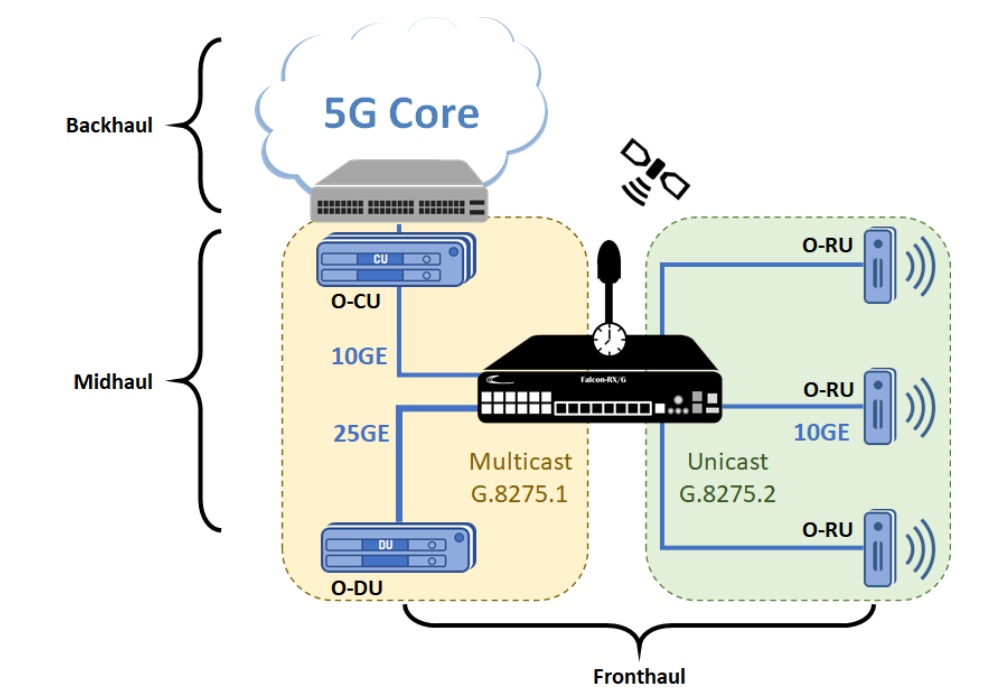
VLAN Tag manipulation
VLAN manipulation is one of the fundamental capabilities of a Carrier Grade Ethernet switch. This trait is extremely valuable when forwarding multiple separate data streams across the 5G Fronthaul, especially when different elements may have different or limited VLAN support by their network interfaces.
This means that different planes may be tagged independently by each of the different components connected by the PTP switch, but still communicate with each other. For example, on the DU side the S-plane may be set untagged while C/U-Plane and M-Plane may be tagged, while on the RU side the M-Plane may be untagged, and C/U-Plane and S-Plane can be tagged. In addition, the PTP switch can translate some of the tags to different VIDs if needed.
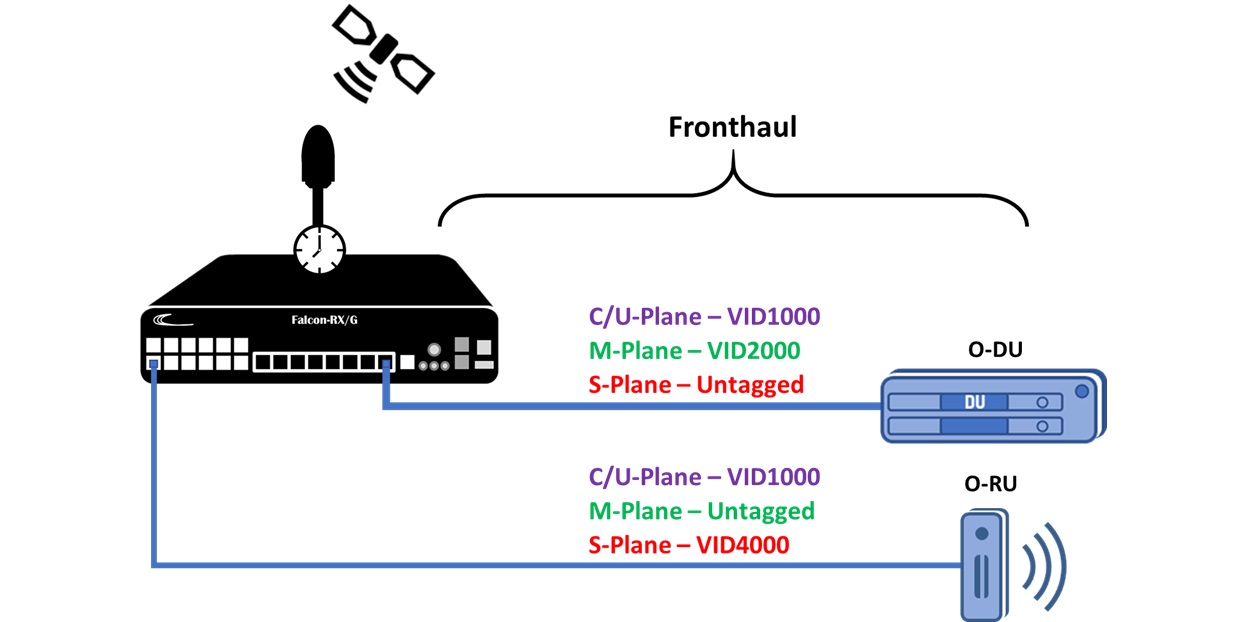
Key Highlights
- 5G networks have strict requirements regarding low latency forwarding and tight synchronization, which includes frequency, phase, and time sync. Dedicated Timing and Transport devices are needed to meet these requirements.
- Integrated PTP Grandmaster and PTP Switch provide the ideal Timing and Transport solution for 5G Fronthaul.
- Flexible and comprehensive PTP implementation generate a versatile solution that fits with all O-RAN fronthaul architectures.
- The Falcon-RX/G delivers on the promise of O-RAN, maintaining flexibility in a cost optimized manner.


